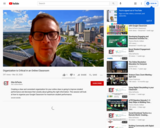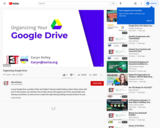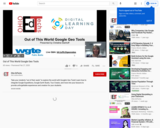
A copy of the entire Northwest Ordinance document is given.
- Subject:
- Social Studies
- Material Type:
- Primary Source
- Provider:
- Yale University
- Provider Set:
- The Avalon Project
- Date Added:
- 08/07/2023

A copy of the entire Northwest Ordinance document is given.

Simple animation explains the function of chromosomes, genes, and DNA by letting you zoom into a cell nucleus for a closer look.

This video segment adapted from Shedding Light on Science illustrates how light changes speed, and thus direction, in a process known as refraction. Includes background reading and discussion questions. [2:05]

A brief history of the Shawnee Indians in Ohio. Site also contains many links to information on other tribes, battles and complete texts of treaties.

The goal of this program is to get your students to answer one question — can the reintroduction of a wetland dependent
animal, such as the trumpeter swan, increase the level of conservation both for the habitat and the
species? Of course this one question leads to a million other questions and that is the purpose of the lessons.
plans. We have tried to develop lessons based on some smaller questions that would eventually lead the student
back to the larger problem they are trying to solve. Each

The balance of trade theory is explained in a very interesting way in this article. Good examples are given depicting this theory.

Creating a clear and consistent organization for your online class is going to improve student performance and decrease their anxiety about getting the right information. This session will look at how to organize your Google Classroom for maximum student performance.

Is your Google Drive a jumble of files and folders? Having trouble finding content others share with you? In this session, you will learn how to take control and organize your Drive using folders and naming conventions, as well as how to select the right sharing settings and permissions for your folders and docs.

Take your students “out of their seats” to explore the world with Google’s Geo Tools! Learn how to integrate Google Expeditions, Google Earth Studio, Tour Creator, and more into your lessons to provide unforgettable experiences and creation for your students.

Are we in the midst of a mass extinction? Is Homo sapiens triggering this mass extinction? Four expert panelists have written responses to the aforementioned questions for this highly informative site.

SciGirls videos feature real girls putting science and engineering to work to answer real-life questions and make discoveries in the world around them. This is a collection of videos about animals and habitats.

PBS LearningMedia is a reliable resources that offers free content for students and educators. In this presentation take a look at some of the resources available for independent student access as well as resources teachers can assign and link with Google Classroom.

The English explorer John Smith was crucial to the exploration of and establishment of colonies within what is now the Northeastern United States. The first permanent English colony in the New World at Jamestown owes its creation to Smith, as does the mapping of the Chesapeake Bay. [4:44]

PBS explores one of the world's oldest religions, Hinduism. Identifies the origins of Hinduism, the sacred text "Vedas," and the three main deities, Brahma, Vishnu, and Shiva. Describes the influence of the caste systems on India's society today.

From the PBS series "Wonders of the African World," comes this description of ruins of Great Zimbabwe. Includes some reasons why the city may have collapsed.

In this extensive lesson, students examine and investigate pictures of pollen grains to determine the likely climate at the time the pollen was shed.

A video lesson defining the basic vocabulary necessary to describe an ecosystem and its parts. Learn how the abiotic and biotic factors work together to form an ecosystem. [7:27]

Straightforward introduction to electrical circuits using minimal materials and time. Students learn about the basics of electrical circuits by experimenting with "mystery cards" -- index cards with hidden aluminum foil used to conduct small amounts of electricity produced by a battery.

Starting from atoms, see how many molecules you can build. Collect your molecules and see them in 3D.

Explore the forces at work when pulling against a cart, and pushing a refrigerator, crate, or person. Create an applied force and see how it makes objects move. Change friction and see how it affects the motion of objects.